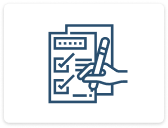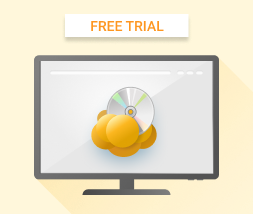MSP Business
Disaster Recovery as a Service (DRaaS) Overview for MSPs
When it comes to backing up and restoring data, MSPs can offer two distinct services. The first, and most basic, is Backup as a Service, or BaaS. A more sophisticated and potentially more profitable offering is Disaster Recovery as a Service, or DRaaS. This article explains what DRaaS is, how it is different from BaaS and how to go about developing a DRaaS offering.
DRaaS Overview
DRaaS refers to a fully managed solution that allows MSPs to restore a customer’s data and infrastructure in the case of a disaster that causes servers, disks or other resources to become inoperable. An MSP that offers a DRaaS service does everything necessary to ensure that a customer's data is backed up and that a plan is in place to restore infrastructure to a working state following a disaster. Once the disruption to the customer’s production systems happens, the MSP performs full recovery to ensure business continuity.
DRaaS or BaaS?
BaaS includes data backup services. As an MSP, you could offer a BaaS service in which you copy customers’ data to backup servers and make it available to them in the event that they need to restore it.
In contrast to BaaS, a DRaaS offering means that an MSP is responsible not just for backing up and restoring data following a failure, but also for restoring the entire IT infrastructure.
Depending on the types of customers you cater to, you might offer BaaS, DRaaS or both.
Customers might be interested in a BaaS solutions in cases like the following:
- their infrastructure is simple enough to be easily reassembled without an expert’s help
- they have a disaster recovery specialist on staff
- they need a less costly solution
Meanwhile, those who want a comprehensive, turnkey solution for backing up and recovering data and a complex infrastructure would be more likely to pay additional fees for DRaaS.
Further reading Backup and Disaster Recovery as a Service: BaaS vs DRaaS
Disaster Recovery and Business Continuity
 Business continuity refers to a business's ability to continue operating during or following an unexpected disruption.
Business continuity refers to a business's ability to continue operating during or following an unexpected disruption.
Achieving business continuity requires setting policies and strategies that are designed to help minimize the risk of disruptions, as well as identifying and assessing the greatest areas of risk to the business.
Disaster recovery provides the foundation for business continuity. It includes the infrastructure, tools, and processes necessary to ensure that data is backed up and can be restored quickly following a disruption.
Given how closely business continuity and disaster recovery are related, organizations commonly combine them into a single business continuity / disaster recovery (BCDR) plan that addresses the recovery of both business operations and IT.
Further reading BCDR: Business Continuity vs Disaster Recovery
Disaster Recovery Key Components
Now, let's take a look at the main components an MSP should have in place in order to offer DRaaS.
RTO and RPO
 Before implementing a DRaaS solution, you must determine the Recovery Time Objective (RTO) and Recovery Point Objective (RPO) of the customer data that you support.
Before implementing a DRaaS solution, you must determine the Recovery Time Objective (RTO) and Recovery Point Objective (RPO) of the customer data that you support.
These terms refer, respectively, to the amount of time that a customer's business can tolerate following a disaster before its data is fully restored (RTO) and the amount of permanent data loss that the business can tolerate following a disaster (RPO).
Determining the minimum RTOs and RPOs that your DRaaS will need to accommodate will allow you to calculate how quickly you'll need to perform data restoration and how often you'll need to perform data backups as part of your DRaaS offering. Your DRaaS infrastructure should be designed with these needs in mind, and you should perform regular RTO and RPO tests to make sure it is capable of meeting them.
Further reading RTO and RPO
Local DR Infrastructure

Depending on the type of DRaaS offering you want to build, local storage infrastructure may be a part of it. Generally speaking, using local storage to build a DRaaS platform makes sense if you have a small number of customers and don't expect your customer base to grow quickly.
If you use local storage, it's important to make it highly available using data replication and distributed storage systems.
You'll want to think about data and network security, too. If it's not necessary to connect your storage systems to the public Internet, avoid doing so. You should also restrict backup data access to only those employees within your organization who absolutely need it. These measures will help to keep customers' data secure and address potential compliance requirements.
In addition, you want to have a plan in place for restoring data quickly from local storage. If you are going to use an Internet connection to restore data from your local backup storage system to a customer's production systems, do you have the bandwidth necessary to move data quickly enough to meet RTO? If you are planning to send customers the data following a disaster using disks, do you have enough spare disks on hand for this purpose? It's important to answer questions like these so that data restoration goes smoothly.
Cloud DR Infrastructure
 In some cases, cloud disaster recovery services are preferable to those based on local storage. For example, this is true when you have a hybrid or a fully cloud-based IT infrastructure, and therefore at least some applications on virtual cloud servers. If your apps are in the cloud, you are better off with cloud DR.
In some cases, cloud disaster recovery services are preferable to those based on local storage. For example, this is true when you have a hybrid or a fully cloud-based IT infrastructure, and therefore at least some applications on virtual cloud servers. If your apps are in the cloud, you are better off with cloud DR.
Cloud-based DRaaS can also be more cost-efficient when you have a lot of data to store. It also your DRaaS offering to scale more easily, too, because you can increase your DRaaS capacity without having to set up new physical servers.
Although most public cloud providers automatically replicate data in order to minimize the risk of data loss, you should take extra steps to ensure that cloud storage remains highly available for your DRaaS offering. For example, replicating data across multiple geographic regions is useful because it ensures that if one cloud region goes down temporarily, your customers' data will still be available to restore.
Also keep in mind that with cloud storage, you can decrease your DRaaS costs by using low-priced storage tiers. However, if you do this, make sure that the time required to restore data from this type of storage, which typically involves delays when accessing data, will not cause problems with meeting your RTOs.
Learn more about cloud disaster recovery and how to build a cloud DR plan:
Further readingCloud Disaster Recovery
You might also want to check out the following recorded webinar:
Disaster Recovery and Cloud Management in Public Cloud
Planning and Testing
Disaster Recovery Planning
 A disaster recovery plan not only serves to document all of the steps that you will take as an MSP to recover data following a disaster, but also ensures that customers know about any steps they will have to take.
A disaster recovery plan not only serves to document all of the steps that you will take as an MSP to recover data following a disaster, but also ensures that customers know about any steps they will have to take.
Will customers need to share access credentials with you in order for you to restore their data? If their existing servers are damaged and need to be replaced, who will be responsible for setting new ones up? Will you focus on restoring certain types of data before others? Answering these questions ahead of time, and spelling them out in a plan that you share with customers, ensures that all parties know what to expect when disaster recovery is occurring.
Further reading Disaster Recovery Plan Checklist
Disaster Recovery Testing
It’s important to ensure that you and your customers are on the same page. This is important not only to help manage expectations, but also to make sure that you can point to a list of requirements that you have fulfilled if something (or everything) goes wrong.
Your plan should include regular testing of disaster recovery scenarios so you can demonstrate that you’ve done your due diligence to find and eliminate potential problems before they become real problems.
There are several variables that will affect how much testing you’ll need to do, as well as what you’ll be charging, and what expectations your clients will have:
- the size of the company you’re supporting
- their budget for a DR solution
- the complexity of your customer’s data structures and networks
- the amount of data to be backed up
Further reading Disaster Recovery Testing: Scenarios, Best Practices, Methods
DRaaS in Your MSP Offering
Many clients that have outsourced or outtasked IT functions to an MSP will see the value in purchasing DRaaS. If the MSP already has operational responsibility for creating and storing valid backup data, they are in a great position to offer a DRaaS to add value and gain additional revenue. Learn the challenges and benefits of building a DRaaS service, as well as the key deliverables from a quality MSP, at the following link:
Further reading Add DRaaS to Your MSP Offering
Features That a DRaaS Solution Must Provide
 Security and encryption
Security and encryption
 Centralized management, monitoring and reporting
Centralized management, monitoring and reporting
 Recovery capabilities: point-in-time restore, restore to same or dissimilar hardware, file-level recovery
Recovery capabilities: point-in-time restore, restore to same or dissimilar hardware, file-level recovery
 Affordability and reliability at the same time: you have to balance cost-effectiveness with quality/reliability of the software and/or cloud storage service you use.
Affordability and reliability at the same time: you have to balance cost-effectiveness with quality/reliability of the software and/or cloud storage service you use.
 Scalability
Scalability
 Rebranding options
Rebranding options

